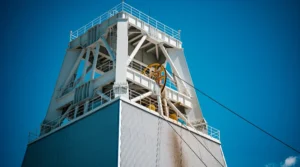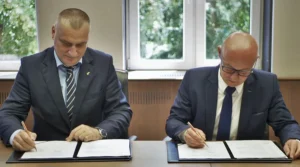What goes on in Poland on the 3rd of November.
The government has adopted a hydrogen strategy until 2030 with an outlook until 2040
On November 2, 2021, the Council of Ministers adopted a resolution on the adoption of the “Polish Hydrogen Strategy until 2030 with a Perspective until 2040”, proposed by the Minister of Climate and Environment. The Polish Hydrogen Strategy is a strategic document that defines the main goals of the development of the hydrogen economy in Poland and the actions needed to achieve them. The document joins the global, European and national efforts to build a low-emission economy.
The aim of the strategy is to create a Polish branch of the hydrogen economy and in order to achieve climate neutrality and maintain the competitiveness of the Polish economy.
Investments in the development of hydrogen technologies offer solutions enabling decarbonisation in those sectors of the economy where decarbonisation is economically unjustified or impossible through electrification.
The document provides for the development of support programs for the development of a hydrogen economy, with this aid only covering low-emission hydrogen, i.e. hydrogen from renewable sources and produced with the use of zero-emission technologies. Obtaining support for the production of hydrogen from fossil fuels will only be possible if carbon dioxide capture technologies (eg CCS / CCU) are used.
PGE and Orsted are waiting for offshore support in the Baltic Sea from the Commission
„Polska Grupa Energetyczna and Ørsted – investment partners implementing the construction of the Baltica offshore wind farm have started the process of individual negotiations with the European Commission regarding the determination of an individual price in the contract for difference for both stages of the Baltica 2 and Baltica 3 projects,” the companies said. PGE and Ørsted expect that the European Commission will make a decision within a year. Determining the individual level of support will be an important element bringing investors closer to making the final investment decision.
PGE and Ørsted submitted a complete set of documents required by the so-called offshore act. Before they are sent to the European Commission, they will be verified by the Energy Regulatory Office (ERO) and the Office of Competition and Consumer Protection (UOKiK), each of which has the right to ask for explanations or answers to additional questions.
„We are extremely pleased that we have started the process leading to the determination of the final price in the contract for difference granted in the spring. It is worth emphasizing that we are the first on the market among investors entitled to individual notification. It is a good omen and allows us to look to the future with optimism. Our priority is to implement the project on schedule. This is of key importance for the Polish power system, where the depleted coal capacities should be replaced with those from other zero-emission sources, e.g. wind farms in the Baltic Sea. Therefore, we hope to complete the individual notification approval process as soon as possible,” said Senior Project Development Director, Søren Westergaard Jensen, who heads the Baltica offshore wind farm development on behalf of Ørsted, as quoted in a press release.









